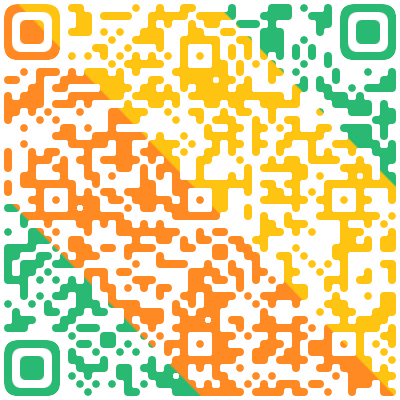seta={1,3,5,7,9} setb={7,9,11,13} print(seta|setb)
查看答案
相关试题
换一换


seta={1,3,5,7,9} setb={7,9,11,13} print(seta|setb)
答案
阅读以下说明和C代码,填补代码中的空缺,将解答填入答题纸的对应栏内。【说明1】 递归函数is_elem(char ch, char *set)的功能是判断ch中的字符是否在set表示的字符集合中,若是,则返回1,否则返回0。【C代码1】int is_elem (char ch ,char*set){ if(*set==‘’) return 0; else if( (1) ) return 1; else return is_elem( (2) )} 【说明2】函数char*combine(char* setA,char *setB)的功能是将字符集合A(元素互异,由setA表示)和字符集合B(元素互异,由setB表示)合并,并返回合并后的字符集合。【C代码2】 char*combine(char *setA, char*setB) { int i,lenA, lenB, lenC; lenA=strlen(setA); lenB=strlen(setB); char*setC=(char*)malloc(lenA+lenB+1); if(!setC) return NULL; strncpy(setC,setA,lenA); //将setA的前lenA个字符复制后存入setC lenC= (3) ; for(i=0;i<lenB;i++) if( (4) ) //调用is_elem判断字符是否在setA中 setC[lenC++]=setB[i]; (5) =‘/0’; //设置合并后字符集的结尾标识 return setC;}
答案
13579,1358,136,14,1,( )。
A.1 B.-3 C.-7
答案
SETB A
答案
SETB C
答案
Anyone applying for a visa to China ____________ to have finger prints taken.
答案
启动定时器工作,可使用SETB TRi启动。()
答案
SETA81000-2微量蒸气压仪结构主要有()
A.进样系统 B.温度控制系统 C.压力检测 D.显示系统
答案
Anyone applying for a visa to China (require)________to have finger prints taken.
答案
Python中,程序a=setb={}print(a==b)的输出结果为true()
答案
热门试题
Daily was first released in 1981 and its European Weekly started in 2010, which is____ in nearly 30 countries in Europe and prints around 100000 copies.
China Daily was first released in 1981 and its European Weekly started in 2010, which is____ in nearly 30 countries in Europe and prints around 100000 copies.
如果(P0)=65H ,则当 CPL P0.2 SETB C MOV P0.4 ,C 执行后(P0)=( )
执行下列程序段后,(P1)=_______H。 MOV P1,#5DH CPL P1.1 CPL P1.2 CLR P1.6 SETB P1.7
使用VC6打开考生文件夹下的源程序文件modi3.cpp。其中定义的类并不完整,按要求完成下列操作,将类的定义补充完整。 1.完成类TestClass1的成员函数seta定义,定义seta对象x为int类型,请在注释∥********1********后添加适当的语句。 2.完成类TestClass1(公有)和类TestClass2(私有)派生类TestClass3的定义,请在注释∥*******
8031有四个工作寄存器区,由PSW状态字中的RS1、RS0两位的状态来决定,单片机复位后,若执行 SETB RS1 指令,此时只能使用区的工作寄存器
8051有四个工作寄存器区,由PSW状态字中的RS1和RS0两位的状态来决定,单片机复位后,若执行 SETB RS0 指令,此时只能使用 区的工作寄存器
public class Drink implements Comparable { public String name; public int compareTo(Object o) { return 0; } } and: Drink one = new Drink(); Drink two = new Drink(); one.name= “Coffee”; two.name= “Tea”; TreeSet set = new TreeSet(); set.add(one); set.add(two); A programmer iterates over the TreeSet and prints the name of each Drink object. What is the result?()
Why is( )fun What delights may its practitioner expect as his reward?First is the sheer joy of making things.As the child delights in his mud pie,so the adult enjoys building things,especially things of his own design.Second is the pleasure of making things that are useful to other people.Third is the fascination of fashioning complex puzzle-like objects of interlocking moving parts and watching them work in subtle cycles,playing out the consequences of principles built in from the beginning.Fourth is the joy of always learning,which springs from the( )nature of the task.In one way or another the problem is ever new,and its solver learns something:sometimes( ),sometimes theoretical,and sometimes both.Finally,there is the delight of working in such a tractable medium.The(请作答此空),like the poet,works only slightly removed from pure thought-stuff.Few media of creation are so flexible,so easy to polish and rework,so readily capable of realizing grand conceptual structures.Yet the program( ),unlike the poet"s words,is real in the sense that it moves and works,producing visible outputs separate from the construct itself.It prints results,draws pictures,produces sounds,moves arms.Programming then is fun because it gratifies creative longings built deep within us and delights sensibilities we have in common with all men.
Why is( )fun What delights may its practitioner expect as his reward?First is the sheer joy of making things.As the child delights in his mud pie,so the adult enjoys building things,especially things of his own design.Second is the pleasure of making things that are useful to other people.Third is the fascination of fashioning complex puzzle-like objects of interlocking moving parts and watching them work in subtle cycles,playing out the consequences of principles built in from the beginning.Fourth is the joy of always learning,which springs from the( )nature of the task.In one way or another the problem is ever new,and its solver learns something:sometimes( ),sometimes theoretical,and sometimes both.Finally,there is the delight of working in such a tractable medium.The( ),like the poet,works only slightly removed from pure thought-stuff.Few media of creation are so flexible,so easy to polish and rework,so readily capable of realizing grand conceptual structures.Yet the program(请作答此空),unlike the poet"s words,is real in the sense that it moves and works,producing visible outputs separate from the construct itself.It prints results,draws pictures,produces sounds,moves arms.Programming then is fun because it gratifies creative longings built deep within us and delights sensibilities we have in common with all men.
Why is( )fun What delights may its practitioner expect as his reward?First is the sheer joy of making things.As the child delights in his mud pie,so the adult enjoys building things,especially things of his own design.Second is the pleasure of making things that are useful to other people.Third is the fascination of fashioning complex puzzle-like objects of interlocking moving parts and watching them work in subtle cycles,playing out the consequences of principles built in from the beginning.Fourth is the joy of always learning,which springs from the(请作答此空)nature of the task.In one way or another the problem is ever new,and its solver learns something:sometimes( ),sometimes theoretical,and sometimes both.Finally,there is the delight of working in such a tractable medium.The( ),like the poet,works only slightly removed from pure thought-stuff.Few media of creation are so flexible,so easy to polish and rework,so readily capable of realizing grand conceptual structures.Yet the program( ),unlike the poet"s words,is real in the sense that it moves and works,producing visible outputs separate from the construct itself.It prints results,draws pictures,produces sounds,moves arms.Programming then is fun because it gratifies creative longings built deep within us and delights sensibilities we have in common with all men.
Why is(请作答此空)fun What delights may its practitioner expect as his reward?First is the sheer joy of making things.As the child delights in his mud pie,so the adult enjoys building things,especially things of his own design.Second is the pleasure of making things that are useful to other people.Third is the fascination of fashioning complex puzzle-like objects of interlocking moving parts and watching them work in subtle cycles,playing out the consequences of principles built in from the beginning.Fourth is the joy of always learning,which springs from the( )nature of the task.In one way or another the problem is ever new,and its solver learns something:sometimes( ),sometimes theoretical,and sometimes both.Finally,there is the delight of working in such a tractable medium.The( ),like the poet,works only slightly removed from pure thought-stuff.Few media of creation are so flexible,so easy to polish and rework,so readily capable of realizing grand conceptual structures.Yet the program( ),unlike the poet"s words,is real in the sense that it moves and works,producing visible outputs separate from the construct itself.It prints results,draws pictures,produces sounds,moves arms.Programming then is fun because it gratifies creative longings built deep within us and delights sensibilities we have in common with all men.
Why is( )fun What delights may its practitioner expect as his reward?First is the sheer joy of making things.As the child delights in his mud pie,so the adult enjoys building things,especially things of his own design.Second is the pleasure of making things that are useful to other people.Third is the fascination of fashioning complex puzzle-like objects of interlocking moving parts and watching them work in subtle cycles,playing out the consequences of principles built in from the beginning.Fourth is the joy of always learning,which springs from the( )nature of the task.In one way or another the problem is ever new,and its solver learns something:sometimes(请作答此空),sometimes theoretical,and sometimes both.Finally,there is the delight of working in such a tractable medium.The( ),like the poet,works only slightly removed from pure thought-stuff.Few media of creation are so flexible,so easy to polish and rework,so readily capable of realizing grand conceptual structures.Yet the program( ),unlike the poet"s words,is real in the sense that it moves and works,producing visible outputs separate from the construct itself.It prints results,draws pictures,produces sounds,moves arms.Programming then is fun because it gratifies creative longings built deep within us and delights sensibilities we have in common with all men.



 使用微信扫一扫登录
使用微信扫一扫登录